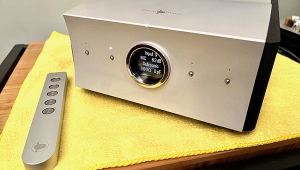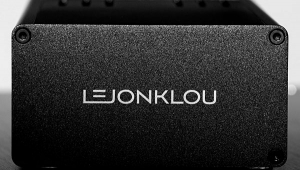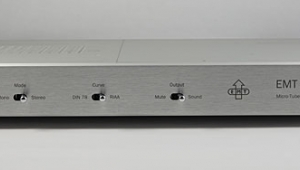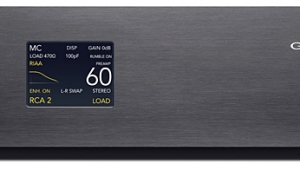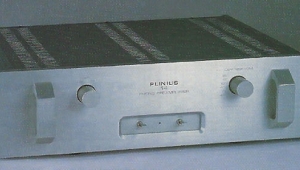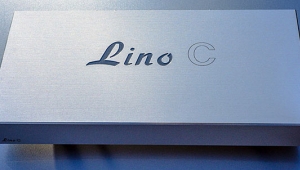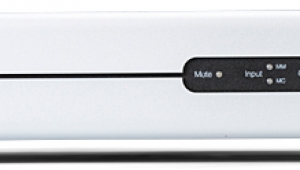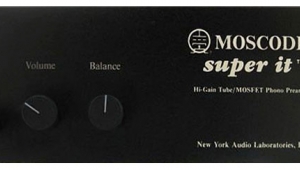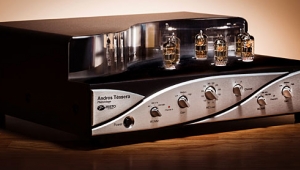| Columns Retired Columns & Blogs |
Artemis Labs PH-1 phono preamplifier
Anyone who knows me will be happy to tell you: I'm very bad at letting go of anger. I hold grudges. I'm unforgiving.
Footnote 1: A quick spin through the pages of phono preamplifiers in the 2006 Stereophile Buyer's Guide shows that the PH-1's gain is actually close to the high-gain specs of some competing models.
I can look back at 10 years' worth of my own phono-preamp reviews and the stain is unmistakable: In every one is the subtle anger, the subtle pissiness, that came from my having to write about such a thing at all. I found it difficult to forgive an industry that would expect preamp buyers to start paying thousands of dollars more, just like that, for a phono section: something that we used to get for free, like drinkable water or a good education.

Nowadays, the old anger doesn't rise to the top any more. Water under the bridge, water over the dam, water going some damn place. It doesn't matter. The vast majority of preamplifiers don't come with phono sections anymore, and we simply have to buy what we simply have to have. I'm ready to come inside now and be nice. I can write about the subject with a minimum of unpleasantness today.
At least there's nothing on the market quite like the Artemis PH-1 ($2890), a phono preamplifier that seems intended to offer perfectionist-level performance at a milder price than some of its competitors. You may also be pleased to know that the PH-1 is made here in America, the same place our water and education comes from.
The Artemis PH-1 is a tubed preamp that's intended for use with medium- and high-output phono cartridges (there's also an Artemis PL-1, designed specifically for low-output cartridges), but I consider its 52dB of gain to be sufficient for all but the lowest of the low (footnote 1). All of the PH-1's gain is produced by active devices, which is to say that a step-up transformer is not a part of the landscape.
From the perspective of a cartridge coil that wants to drive the Artemis PH-1, the first thing seen is the shunt resistance that the manufacturer has put there—a 47.5k ohm resistor—moderated by whatever resistance the user adds for her/himself, in parallel. To that end, the PH-1 is equipped with a bank of 3M TexTool ZIF sockets, allowing the use of auxiliary resistors (not supplied) without the need for soldering. (ZIF stands for Zero Insertion Force. Seriously.) Count me among the mavens who believe that a lightly wound moving-coil cartridge performs its best into a resistive load of lower than 1000 ohms; count me lucky for being enough of a geek that I always have a good selection of high-quality, quarter-watt resistors in the house—and made liberal use of them with all the cartridges I tried with the PH-1.
The first device in line with the input signal is one half of a Russian 6N1P dual-triode tube, used in fixed bias (as opposed to autobias) mode: The cathode is tied directly to ground, without a resistor in line, and the grid is tied to a fixed DC supply, alongside the AC music signal. In an interesting design twist, the bias voltage for the 6N1P is supplied by two N-style 1.5V batteries, one for each half of the tube.
A passive RIAA equalization circuit follows that first gain stage, then the signal is amplified by two more stages: one half of a 12AX7 dual-triode followed by one half of a 5687 dual-triode, both in autobias mode. The 5687 was selected as the last stage because its low plate resistance allows for a lowish output impedance without the need for a cathode follower, and its plate is loaded with a Lundahl C-core choke, for increased operating headroom and consequent lower distortion. Also in the interest of minimizing the effects of loading on frequency response, the PH-1's last two gain stages incorporate about 5dB of negative feedback.
If you've been doing the math as we've gone along, you'll have guessed that the Artemis PH-1 contains three tubes. In fact, the PH-1 has five tubes altogether: a single 6N1P, plus two 12AX7s and two 5687s. Because the 12AX7 and 5687 have split heaters, one side of each tube—which is to say, one triode within each dual-triode envelope—can be used independently of the other. The PH-1's designer has taken advantage of that by wiring the tube sockets so that one channel uses one tube half and the other channel uses the other half. Thus the individual tubes run cooler, and the owner can get most of the sonic benefits of a fresh set of tubes just by swapping one channel's 12AX7 and 5687 for the other's, after such time as tube deterioration becomes sonically apparent. (The 6N1P is exempt from this "Cool-Swap" design.)
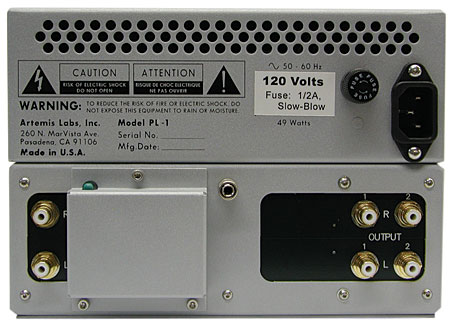
The PH-1's power supply contains no tubes at all. MOSFETs are used for low-gain regulation of the rail voltage—a dual-mono design downstream from the custom-built, electrostatically shielded mains transformer—and all tube heater supplies are DC, for low hum. High-speed rectifiers are used throughout.
The PH-1's audio circuitry is hand-wired on a pair of phenolic tag boards, one for each channel. Names like Solen and Auricap appear among the nicely and neatly dressed component parts, some of which are said to be hand-tested and -selected to very fine tolerances. Considered from the outside, the PH-1's chassis is a two-layer alloy box finished in a very nice powder-coat gray and adorned with an attractive stainless-steel front. As to the rear panel, I was puzzled to see that the input jacks aren't labeled as such. Then again, because the two pairs of output jacks are labeled, the input jacks can be identified through the process of elimination—that, and their physical proximity to the aforementioned ZIF sockets. For the record, I would find it more useful to have two pairs of inputs and a single pair of outputs rather than the other way around. But that's just me.
One last observation before I describe my listening experiences: Some of you may be put off to learn that the Artemis PH-1 inverts absolute signal polarity—and yet the owner's manual makes no mention of the fact. I understand. On a recent trip to Martha's Vineyard, I got a hell of a sunburn on my bald spot. Looking back, I was angry to think that no one ever warned me about such a thing. Luckily, inverting polarity by reversing speaker-cable connections is almost as easy as putting on a hat—and the likelier you are to be bothered by incorrect polarity, the easier it will be for you to identify such a condition at once and appropriately correct for it.
Setup and listening
I used the Artemis PH-1 with a somewhat greater number of partnering components than usual, for a variety of reasons. First, given that I'm accustomed to loading my moving-coil cartridges with a transformer instead of an active device, I wanted to know as many of the sonic and musical consequences of the latter approach as I reasonably could. Second, given the PH-1's mildly unusual approach to keeping output impedance low, I wanted to ensure that there were no drastic audible differences between different line-level loads on its output. (As it turned out, there were not.)
Footnote 1: A quick spin through the pages of phono preamplifiers in the 2006 Stereophile Buyer's Guide shows that the PH-1's gain is actually close to the high-gain specs of some competing models.
- Log in or register to post comments
